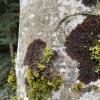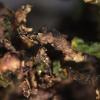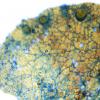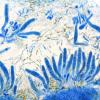
09-01-2026 17:41
Arnold BüschlenHallo, F. dilatata wird von vielen Bryoparasiten

10-01-2026 20:00
Tom SchrierHi all,We found picnidia on Protoparmeliopsis mur

07-01-2026 22:22
 Danny Newman
Danny Newman
Tatraea sp. on indet. hardwood The Swag, Great Sm

10-01-2026 01:18
 Danny Newman
Danny Newman
cf. Neovaginatispora fuckelii on indet. shrub Pre

07-01-2026 10:24
 Danny Newman
Danny Newman
Pezicula sp. on indet. hardwood Appalachian Highl

09-01-2026 10:08
 Blasco Rafael
Blasco Rafael
Hola, en el mismo habitat que la anteriorRetamaDia

08-01-2026 21:22
 Blasco Rafael
Blasco Rafael
Hola, He recogido esta muestra de Orbilia sobre Re

07-01-2026 17:29
 Marc Detollenaere
Marc Detollenaere
Dear Forum,On a barkless Populus I found some smal

10-11-2021 17:33
 Riet van Oosten
Riet van Oosten
Add-on topic http://www.ascofrance.com/forum/7059

07-01-2026 10:05
 Danny Newman
Danny Newman
cf. Chaetospermum on XylariaCosby Campground, Grea
F. dilatata wird von vielen Bryoparasiten als Wirt benutzt.
Hier möchte ich euch Bryonectria callicarpa vorstellen.
Seine Fruchtkörperchen lassen sich schon im Feld mit einer 10x Handlupe erahnen. Vor allem wenn die Lebermoospolster nass sind, kann man zwischen deren Oberblätter kleine hellgelbe Fruchtkörperchen erkennen die dort hervorlugen . Trocken sind sie eher dunkelgelb. Sie sind klein, auf einen halben mm liegen oft 3-4 nebeneinander. Die Oberfläche der FK ist mit Hyphen überzogen dies zeigt sich wenn mit Baumwollblau gefärbt wird. Ein weiteres Merkmal ist die unregelmässige Anzahl Sporen in den den Asci: sie können 4 / 5/ 6/ 7 sporig sein. Die Sporen sind glatt, einmal septiert und haben Oeltropfen.
Arnold Büschlen
In der Folge einige Bilder zu B. callicarpa:
All the best, George
Thank you very much for your kind words.
Best regards, Arnold







